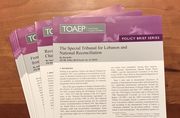Table of contents:
Element:
As noted by ICC Trial Chamber in The Prosecutor v. Jean-Pierre Bemba Gombo:
"Rape requires "invasion" of a persons body by "conduct resulting in penetration, however slight, of any part of the body of the victim or of the perpetrator with a sexual organ, or of the anal or genital opening of the victim with any object or any other part of the body" The Chamber emphasises that, according to the Elements of Crimes, "the concept of invasion is intended to be broad enough to be gender-neutral". Accordingly, "invasion", in the Courts legal framework, includes same-sex penetration, and encompasses both male and/or female perpetrators and victims. The Chamber notes that the definition of rape encompasses acts of "invasion" of any part of a victims body, including the victims mouth, by a sexual organ. Indeed, as supported by the jurisprudence of the International Criminal Tribunal for the former Yugoslavia ("ICTY"), oral penetration, by a sexual organ, can amount to rape and is a degrading fundamental attack on human dignity which can be as humiliating and traumatic as vaginal or anal penetration." [1]
The Akayesu Trial Chamber noted that:
"[...] While rape has been defined in certain national jurisdictions as non-consensual intercourse, variations on the act of rape may include acts which involve the insertion of objects and/or the use of bodily orifices not considered to be intrinsically sexual."[2]
"[...] rape is a form of aggression and that the central elements of the crime of rape cannot be captured in a mechanical description of objects and body parts. The Convention against Torture and Other Cruel, Inhuman and Degrading Treatment or Punishment does not catalogue specific acts in its definition of torture, focusing rather on the conceptual frame work of state sanctioned violence. This approach is more useful in international law. Like torture, rape is used for such purposes as intimidation, degradation, humiliation, discrimination, punishment, control or destruction of a person. Like torture, rape is a violation of personal dignity, and rape in fact constitutes torture when inflicted by or at the instigation of or with the consent or acquiescence of a public official or other person acting in an official capacity."[3]
"The Chamber defines rape as a physical invasion of a sexual nature, committed on a person under circumstances which are coercive. Sexual violence which includes rape, is considered to be any act of a sexual nature which is committed on a person under circumstances which are coercive."[4]
3.2.1. Evidence of an invasion of the anal or genital opening with any object.
3.2.2. Evidence of an invasion of the anal or genital opening with any other part of the body.
The Furundžija Trial Chamber found that:
"(ii) by coercion or force or threat of force against the victim or a third person."[5]
The Musema Trial Chamber held that:
"The Chamber concurs with the conceptual approach set forth in the Akayesu Judgement for the definition of rape, which recognizes that the essence of rape is not the particular details of the body parts and objects involved, but rather the aggression that is expressed in a sexual manner under conditions of coercion."
"The Chamber considers that the distinction between rape and other forms of sexual violence drawn by the Akayesu Judgement, that is 'a physical invasion of a sexual nature' as contrasted with 'any act of a sexual nature' which is committed on a person under circumstances which are coercive is clear and establishes a framework for judicial consideration of individual incidents of sexual violence and a determination, on a case by case basis, of whether such incidents constitute rape. The definition of rape, as set forth in the Akayesu Judgement, clearly encompasses all the conduct described in the definition of rape set forth in Furundzija."
"The Chamber notes that in the Furundzija Judgement, the Trial Chamber considered forced penetration of the mouth as a humiliating and degrading attack on human dignity and largely for this reason included such conduct in its definition of rape even though State jurisdictions are divided as to whether such conduct constitutes rape. The Chamber further notes, as the Furundzija Judgement acknowledges, that there is a trend in national legislation to broaden the definition of rape. In light of the dynamic ongoing evolution of the understanding of rape and the incorporation of this understanding into principles of international law, the Chamber considers that a conceptual definition is preferable to a mechanical definition of rape. The conceptual definition will better accommodate evolving norms of criminal justice."
"For these reasons, the Chamber adopts the definition of rape and sexual violence set forth in the Akayesu Judgement."[6]
The Trial Chamber in Kunarac found that:
"[...] the actus reus of the crime of rape in international law is constituted by: the sexual penetration, however slight: (a) of the vagina or anus of the victim by the penis of the perpetrator or any other object used by the perpetrator; or (b) of the mouth of the victim by the penis of the perpetrator; where such sexual penetration occurs without the consent of the victim. Consent for this purpose must be consent given voluntarily, as a result of the victim's free will, assessed in the context of the surrounding circumstances. The mens rea is the intention to effect this sexual penetration, and the knowledge that it occurs without the consent of the victim."[7]
Footnotes:
[1] ICC, The Prosecutor v. Jean-Pierre Bemba Gombo, Trial Judgement 21 March 2016, para. 99-101.
[2] ICTR, Akayesu Trial Judgment 2 September 1998, para. 596.
[3] ICTR, Akayesu Trial Judgment 2 September 1998, para. 597.
[4] ICTR, Akayesu Trial Judgment 2 September 1998, para. 598; upheld in ICTY, Mucic et al. (Čelebići) Trial Judgment 9 October 2001, para. 478-479; ICTR, Musema Trial Judgement 27 January 2000, para. 965.
[5] ICTY, Furundžija Trial Judgement 10 October 1998, para. 185.
[6] ICTR, Musema Trial Chamber Judgement 27 January 2000, para. 226-229.
[7] ICTY, Kunarac et al. Trial Judgment 22 February 2001, para. 460. Upheld in ICTY, Kunarac et al. Appeals Judgment 12 June 2002, para. 127-128.







